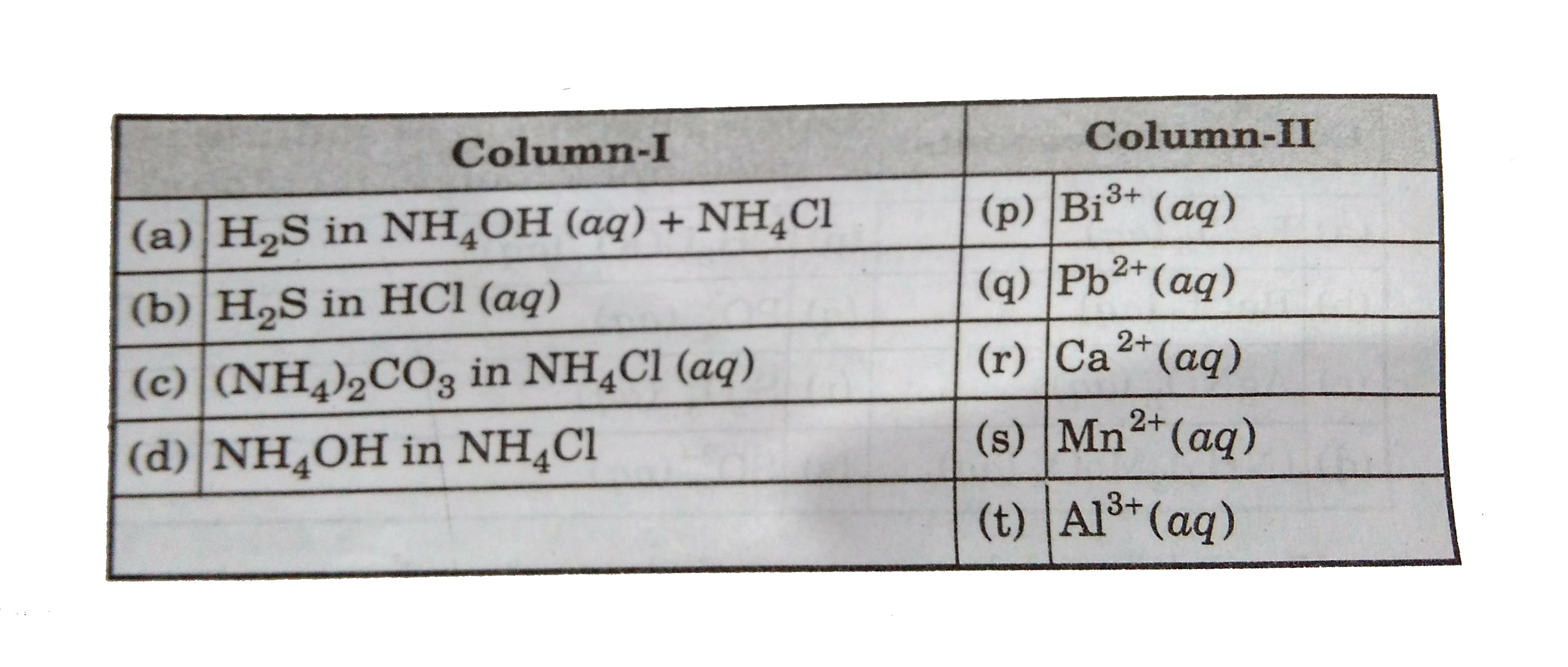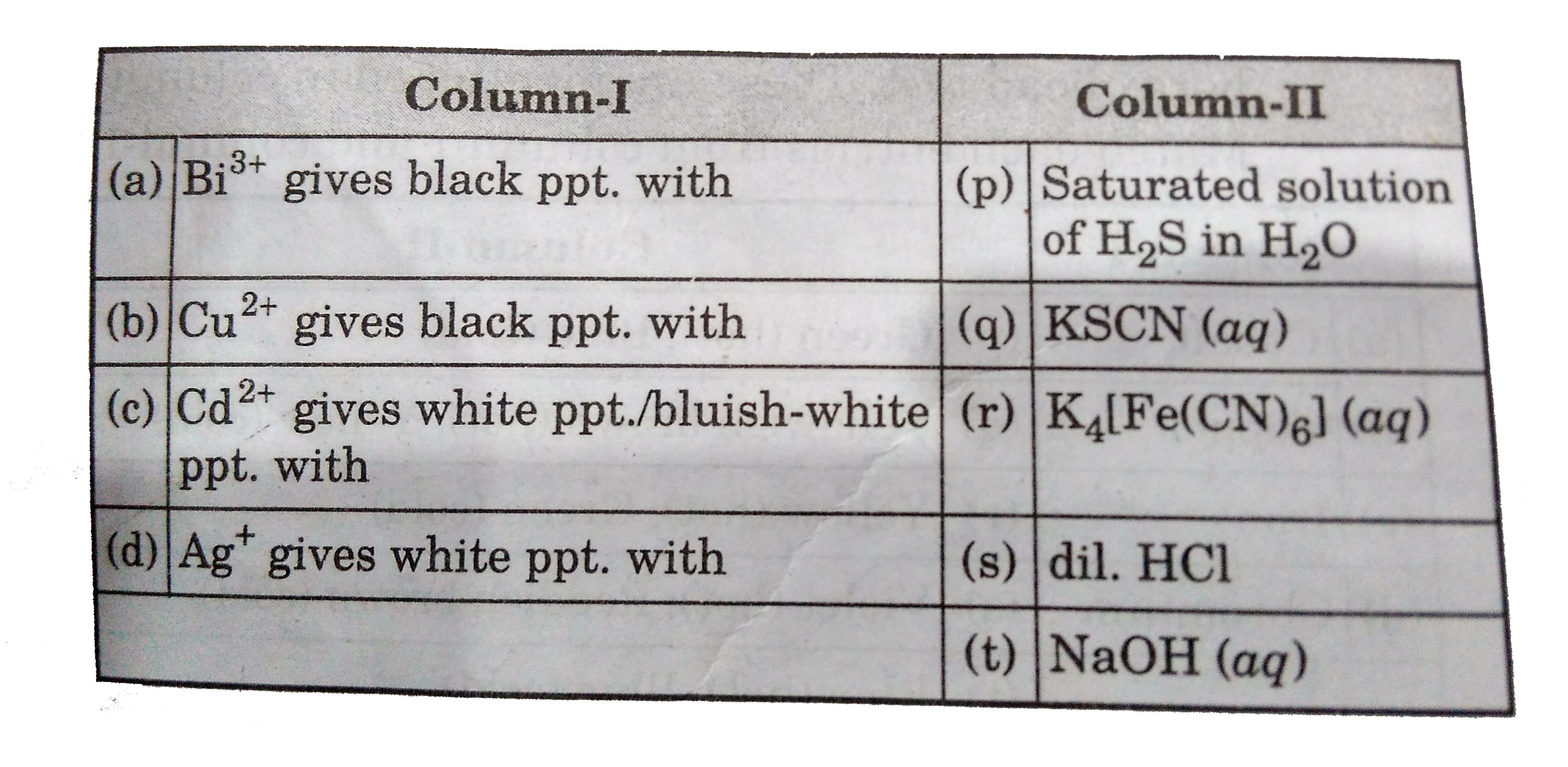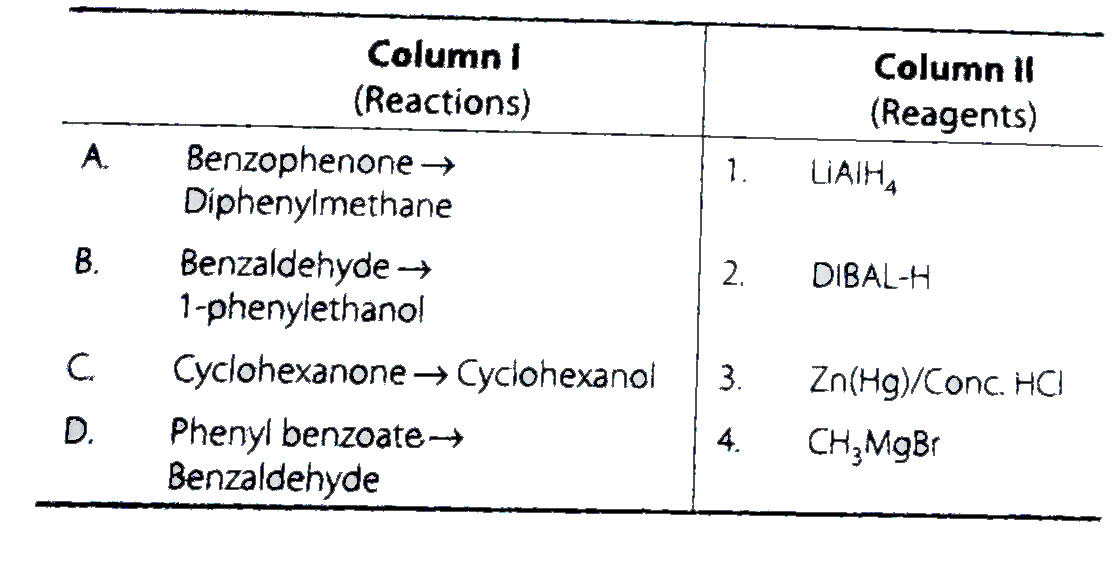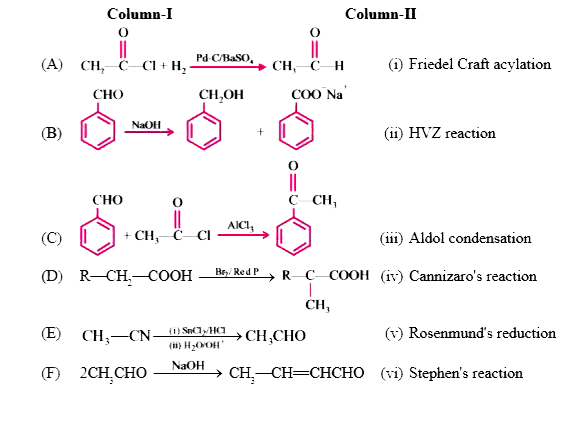Column(I) contains some reagents which when taken in excess produce precipitate with radical given in column (II).Accordingly match the column (I) with column (II).
Column−I(Reagent)Column−II(Radical)(A)KCN(aq)(p)Pb2+(B)NaOH(aq)(q)Ag+(C)Kl(aq)(r)Hg2+2(D)K2CrO4(aq)(s)Cu2+
The correct Answer is:A→p,r ; B→q,r,s ; C→p,q,r,s ; D→p,q,r
(A)Pb(CN)2⏐↓ white , not soluble in excess to reagent. AgCN↓ white soluble in excess of reagent
Hg+Hg(CN)2⏐↓ black, not soluble in excess reagent, Cu(CN)2⏐↓ (yellow) Excess−−−→K3[Cu(CN)4] (soluble complex)
(B)Pb(OH)2⏐↓ white ExcessNa2[Pb(OH)4](soluble complex )
Ag2O↓ brown, Hg2O↓ black, Cu(OH)2⏐↓ blue
(C )Pbl2↓yellow Excess−−−→[Pbl4]2− soluble complex only with concentrated solution of KI(4M).
AgI↓yellow excess−−→ No reaction
Hg2l2⏐⏐↓GreenExcess−−−→[Hgl4]−+Hg⏐⏐↓black
ubrace(Cu l darrwhite+I_3^(-))towhite ppt in brown coloured solution
(D)PbCrO4↓yellow
Ag2CrO4↓(brick red/brownish red)
Hg2CrO4↓ red (with hot soluton of K2CrO4)
In cold, brown precipitate is obtained
Topper's Solved these Questions
Similar Questions
Column-IColumn−II(Oxidation sate of N)(a)NO(p)+5(b)NO2(q)+3(c)NO–2(r)+4(d)NO–3(s)+2
View SolutionColumn-I lists some of Group reagents which give characteristic colout/precipitate mentioned cations in column-II. Match each entry of column-I with those given in column-II.

View SolutionMatch the colour of ppt. listed in column-I with the reagent(s) is column-II.

View SolutionMatch the reactions given in Column I with the suitable reagents given in Column II.

View SolutionMatch the reactions given in Column I with the suitable reagents given in Column II.

View SolutionMatch the reactions given in Column I with the suitable reagents given in Column II.

View SolutionMatch the reactions given in Column I with the suitable reagents given in Column II.
 .
.
View SolutionMatch Column-I with Column-II
Column-IColumn-II(A)XeF2(p)Square pyramidal(B)PCl5(q)linear shape(C)XeOF4(r)sp3dhybridization(D)XeF4(s)sp3d2
View SolutionMatch the nature of aqueous solutions of the substances listed in Column I with the character listed in Column II.
Column IColumn II(A)KCN(aq)(p)Strongly basic(B)TiOH(aq)(q)Neutral(C)BeCl2(aq)(r)Weakly basic(D)NaNO3(aq)(s)Weakly acidic
View SolutionMatch the following column of precipitate/mass listed in Column I with the reagent (s) listed in Column II:

View Solution
